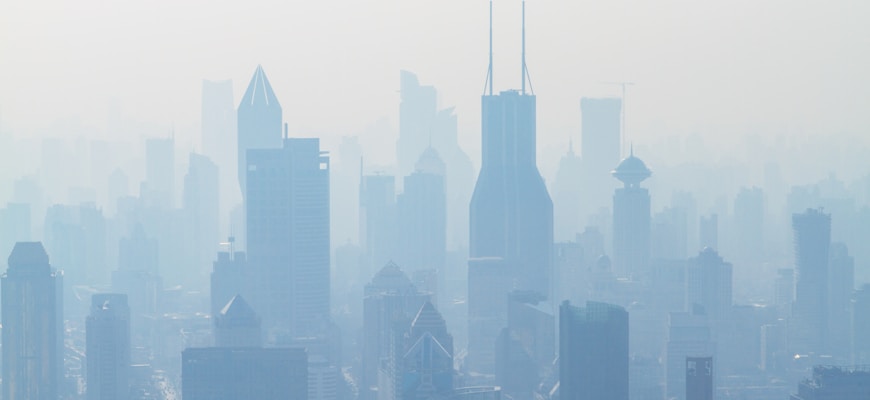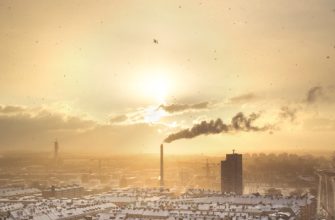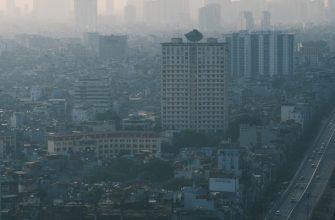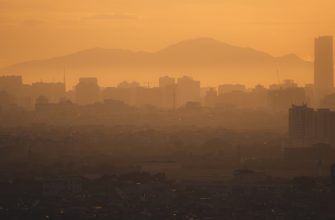- Understanding Urban Air Pollution: The Invisible Threats We Face
- Key Air Pollutants in Cities: What You Need to Know
- The Hidden Dangers of Urban Air Quality: A Closer Look
- Sources of Air Contamination: Identifying the Culprits
- Health Impacts of Air Pollutants: Why We Should Care
- Strategies for Combatting Air Pollution in Urban Environments
Understanding Urban Air Pollution: The Invisible Threats We Face
Urban air pollution represents a significant challenge that cities around the world face today. The invisible threats that accompany this issue can have severe implications for public health and the environment. Understanding the primary air pollutants is crucial in addressing this pressing concern.
- Particulate Matter (PM): These tiny particles, which can penetrate deep into the lungs, are among the most harmful pollutants. They originate from vehicle emissions, industrial activities, and construction sites.
- Nitrogen Dioxide (NO2): This gas is primarily released from cars and power plants. Its presence can lead to respiratory problems and contributes to the formation of smog.
- Sulfur Dioxide (SO2): Emitted from burning fossil fuels, sulfur dioxide can cause acid rain and harm both human health and ecosystems.
- Volatile Organic Compounds (VOCs): These chemicals, found in products like paints and cleaning supplies, can lead to short- and long-term health issues, as well as contribute to ozone formation.
- Ozone (O3): Ground-level ozone, a secondary pollutant formed by reactions between sunlight and other pollutants, poses a risk to respiratory health and can exacerbate existing conditions.
Mitigating urban air pollution requires a comprehensive approach that includes enhancing public transportation, implementing strict emissions standards, and promoting the use of green technologies. Engaging communities in awareness programs about air quality can empower individuals to take action against these invisible threats.
Continued research and monitoring of air quality are essential in understanding the dynamics of urban air pollution. By prioritizing clean air initiatives, cities can work towards a healthier environment for all inhabitants.
Key Air Pollutants in Cities: What You Need to Know
Air pollution in cities is a pressing issue that affects the health of residents and the environment. Understanding the key air pollutants is essential for addressing this invisible threat. Major pollutants include:
- Particulate Matter (PM): These tiny particles, which can be inhaled, originate from various sources, including vehicle emissions, construction sites, and industrial activities. PM can cause respiratory issues and cardiovascular diseases.
- Nitrogen Dioxide (NO2): This gas is produced mainly from burning fossil fuels. It can irritate the respiratory system and contribute to the formation of smog and acid rain.
- Sulfur Dioxide (SO2): Emitted from power plants and vehicles, SO2 can lead to acid rain and respiratory problems. It plays a significant role in urban air quality deterioration.
- Carbon Monoxide (CO): This colorless, odorless gas is primarily generated by motor vehicles. High levels of CO can lead to serious health issues, particularly for vulnerable populations.
- Ozone (O3): While beneficial in the upper atmosphere, ground-level ozone can trigger asthma attacks and other respiratory illnesses. It forms when pollutants react with sunlight.
Addressing air pollution requires a comprehensive understanding of these contaminants. Awareness is crucial for fostering community action and advocating for policies aimed at improving urban air quality. By recognizing the sources and impacts of these pollutants, cities can implement effective strategies to reduce emissions and protect public health.
The Hidden Dangers of Urban Air Quality: A Closer Look
Urban air quality poses significant risks to public health, often going unnoticed by residents. The hidden dangers of air pollution stem from various pollutants that compromise the atmosphere in cities. Understanding these pollutants is essential for recognizing their impact on health and the environment.
- Particulate Matter (PM): Fine particles, known as PM2.5 and PM10, can penetrate deep into the lungs and enter the bloodstream, causing respiratory and cardiovascular issues.
- Nitrogen Dioxide (NO2): Emitted from vehicles and industrial processes, NO2 contributes to the formation of smog and can aggravate asthma and other lung diseases.
- Ozone (O3): Ground-level ozone, formed by chemical reactions between pollutants in the presence of sunlight, is a major component of urban smog and can lead to serious health problems.
- Volatile Organic Compounds (VOCs): These organic chemicals, released from products like paints and cleaning agents, can cause short- and long-term health effects, including headaches and liver damage.
- Sulfur Dioxide (SO2): Primarily produced by burning fossil fuels, SO2 can irritate the respiratory system and is a key contributor to acid rain.
Monitoring urban air quality is crucial for identifying sources of pollution and mitigating their effects. Local governments and organizations must prioritize air quality assessments to protect communities from these hidden dangers. Community awareness campaigns can further educate the public about the significance of clean air and the steps necessary to improve urban air conditions.
Implementing solutions such as green spaces, stricter emissions regulations, and promoting public transportation can significantly enhance urban air quality. By addressing the hidden dangers of air pollution, cities can create a healthier environment for all residents, ultimately leading to improved quality of life.
Sources of Air Contamination: Identifying the Culprits
Air contamination in urban environments poses significant health risks and environmental challenges. Identifying the main sources of air pollution is essential for developing effective strategies to combat this issue. The culprits of air contamination can be broadly categorized into several key sources, each contributing to the degradation of air quality.
- Vehicle Emissions: One of the primary contributors to urban air pollution is emissions from motor vehicles. Cars, trucks, and buses release harmful gases, including nitrogen oxides (NOx) and particulate matter (PM), leading to serious health issues.
- Industrial Discharges: Factories and power plants are major sources of air contaminants. They emit a variety of pollutants, including sulfur dioxide (SO2) and volatile organic compounds (VOCs), which can significantly impact air quality.
- Construction Activities: Urban construction sites generate dust and other particulate matter, contributing to air contamination. The use of heavy machinery and the disturbance of soil can release toxins into the atmosphere.
- Residential Heating: The burning of fossil fuels for heating in homes, especially during colder months, releases pollutants like carbon monoxide and fine particulates, which worsen air quality.
- Agricultural Practices: Pesticides and fertilizers used in agriculture can release ammonia and other pollutants into the air, contributing to the overall contamination of urban environments.
Understanding these sources of air contamination is crucial for implementing effective policies and public awareness campaigns. By pinpointing the culprits behind air pollution, cities can take proactive measures to improve air quality and protect public health.
Health Impacts of Air Pollutants: Why We Should Care
Air pollutants pose significant health risks that can affect individuals of all ages. Understanding the health impacts of these pollutants is crucial for urban residents. Exposure to harmful substances in the air can lead to a variety of respiratory and cardiovascular diseases, as well as exacerbate existing health conditions.
Common air pollutants include particulate matter (PM), nitrogen dioxide (NO2), sulfur dioxide (SO2), and ozone (O3). Each of these contaminants has distinct health implications:
- Particulate Matter (PM): Fine particles can penetrate deep into the lungs, leading to conditions such as asthma, bronchitis, and even lung cancer.
- Nitrogen Dioxide (NO2): This gas can irritate the airways and increase the risk of respiratory infections, especially in children.
- Sulfur Dioxide (SO2): Exposure can result in throat and eye irritation, as well as aggravate pre-existing respiratory diseases.
- Ozone (O3): High levels of ground-level ozone can cause chest pain, coughing, and worsen asthma symptoms.
Long-term exposure to these pollutants is linked to chronic health problems, including heart disease and reduced lung function. Vulnerable populations, such as children, the elderly, and those with pre-existing health issues, are at an increased risk. It is essential to recognize the significance of air quality and take proactive measures to reduce exposure to harmful pollutants.
Efforts to improve air quality can have profound effects on public health. Implementing stricter emissions regulations, promoting the use of public transportation, and increasing green spaces in urban areas are effective strategies to mitigate the impact of air pollutants. Raising awareness about the sources and effects of air contamination can empower communities to advocate for cleaner air.
By understanding the health impacts of air pollutants, individuals can make informed choices and contribute to a healthier environment. Collective action towards reducing air pollution not only protects personal health but also enhances the quality of life in urban settings.
Strategies for Combatting Air Pollution in Urban Environments
Air pollution in urban environments poses significant health risks and environmental challenges. Effective strategies are essential for combatting air pollution and improving air quality in cities. Implementing a combination of technological advancements, policy changes, and community initiatives can lead to a cleaner atmosphere.
- Promoting Public Transportation: Encouraging the use of public transportation reduces the number of vehicles on the road, thereby decreasing emissions. Cities should invest in efficient, reliable transit systems to make public transport a viable option for residents.
- Implementing Green Spaces: Increasing the number of parks and green areas in urban settings helps absorb pollutants and improves air quality. Vegetation can significantly mitigate the effects of harmful air contaminants, providing a natural remedy for urban air pollution.
- Encouraging Electric Vehicles: Transitioning to electric vehicles (EVs) can drastically cut down on harmful emissions. Incentives for EV purchases and the expansion of charging infrastructure are crucial steps towards reducing air pollution in cities.
- Enforcing Emission Regulations: Stricter regulations on industrial emissions and vehicle exhaust can lead to significant reductions in air pollutants. Policymakers must ensure that industries comply with environmental standards to protect urban air quality.
- Raising Public Awareness: Educating citizens about the sources and effects of air pollution can empower them to take action. Community programs and campaigns can promote sustainable practices that contribute to cleaner air.
Combating air pollution requires a multifaceted approach. By integrating these strategies, urban areas can make substantial progress toward achieving cleaner air. Collaborative efforts from governments, businesses, and individuals are essential in the fight against air pollution, leading to healthier urban environments for current and future generations.








